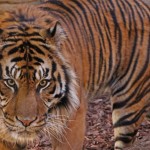The Shwedagon, Burma (20.02.14)
Nomadic Thoughts have now been resending clients to Burma (Myanmar) for over two years.
And what a two years it has been for the Burmese tourism industry. The unparalleled explosion of interest from worldwide tourists following the National League for Democracy leader Aung San Suu Kyi’s invitation to return to Burma, has frankly been difficult to cope with, as ‘demand’ far outstrips ‘supply’.

We at Nomadic Thoughts have monitored our local ground options carefully. We have arranged trips north, south, east and west, but the fast-changing tourism landscape demands constant attention. For example, we are cautious when choosing hotels, not only to ensure their quality and standard of service, but also to gauge who owns them. The future of Burma’s tourism must be developed to enhance local people’s livelihoods as much as possible, rather than to fill the previous military junta’s coffers.
All stakeholders, from hoteliers to indigenous tribal peoples, can ultimately benefit from rising visitor numbers. The figures show impressive growth – from just over 791,000 in 2010 to 2.04 million in 2013. Looking to the future we are indeed in for a time of wholesale change as the Burmese Tourism Master Plan intends to grow to an annual rate of 7.5 million tourists by 2020.

Amidst all this change the one building that stays serene, special and sanguine is the Shwedagon Pagoda.
Beautiful from whatever distance or angle you view its 99 metre height, this gold stupa has been the symbol of national unity for centuries. It is the most sacred and important Buddhist site in Burma, with legend tracing it back 2,600 years. It is one of my favourite sites in the world: to this day I remember being bowled over by its sheer size, beauty and sense of calm when I first visited in 1984.
The charm of the Shwedagon today is that it has not changed over the centuries, not even during recent excessively turbulent decades. Positioned in the heart of Rangoon (Yangon), high on Singuttara Hill a short distance from the Royal Lake, this holy relic enshrines strands of Buddha’s hair. It is covered by gold plate and patched up by donated gold leaf; it has a stupa top encrusted with 4,531 diamonds, the largest of which is 72 carats.
Visitors will be amazed by the myriad of smaller pagodas, temples and shrines that surround the inner region directly below the main pagoda. Like so many churches, temples, mosques and shrines the sense of peace and magnificence is most acute when stopping, watching and blending into the surrounding environment. I love it and have been fortunate to have spent many an hour watching the world go by, while sitting among the marble floored mini-pagoda shrines that surround the Shwedagon.
Hundreds of colourful temples, statues, stupas and offerings regularly tended by monks and local people, all combine to give the site a feeling of utter calm and tranquillity. Pigeons, whose droppings have been traditionally auctioned off for gold content once a month (after pecking flies off the gold leaf panels), flutter about like regal ravens at the Tower of London.

The surrounding area is a hive of gentle activity as visitors from across the land make offerings and local community meetings start up. Monks meditate around the many different shrines. Devotees wash their cherished statues amid the sweet smell of incense, candles and freshly cut flowers. Prayers, worship and meditation are equally matched by all manner of visitors from school children and soldiers, to monks and camera-snapping tourists – all blending together in a collective spirit of friendship and welcome.
As my images show, very little has altered in the inner circle around the main Shwedagon Pagoda over the years. And long may it last.














